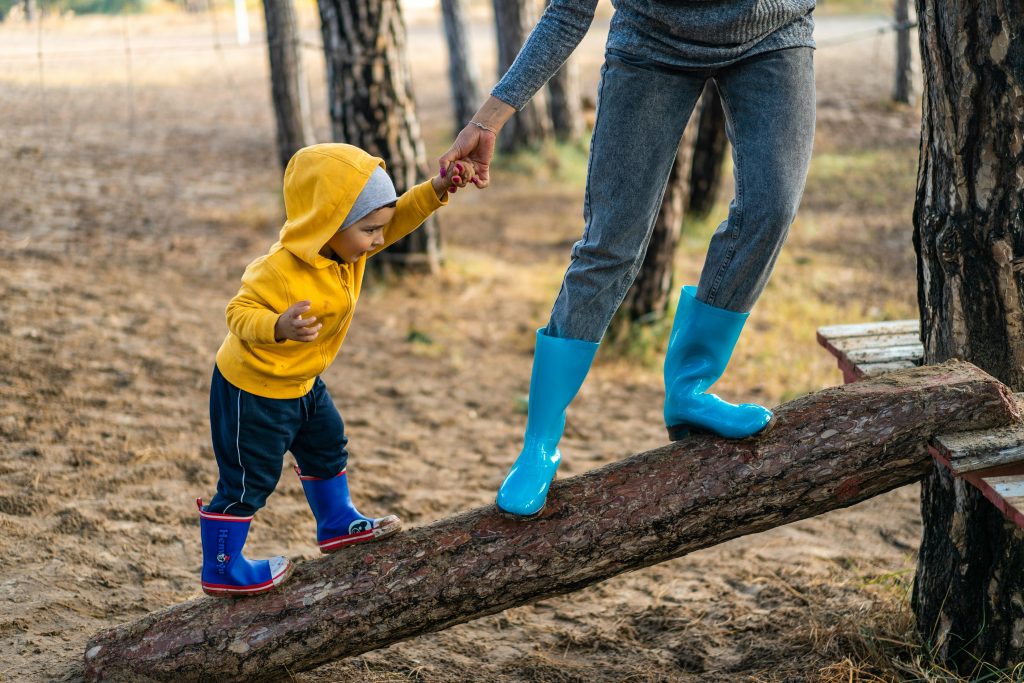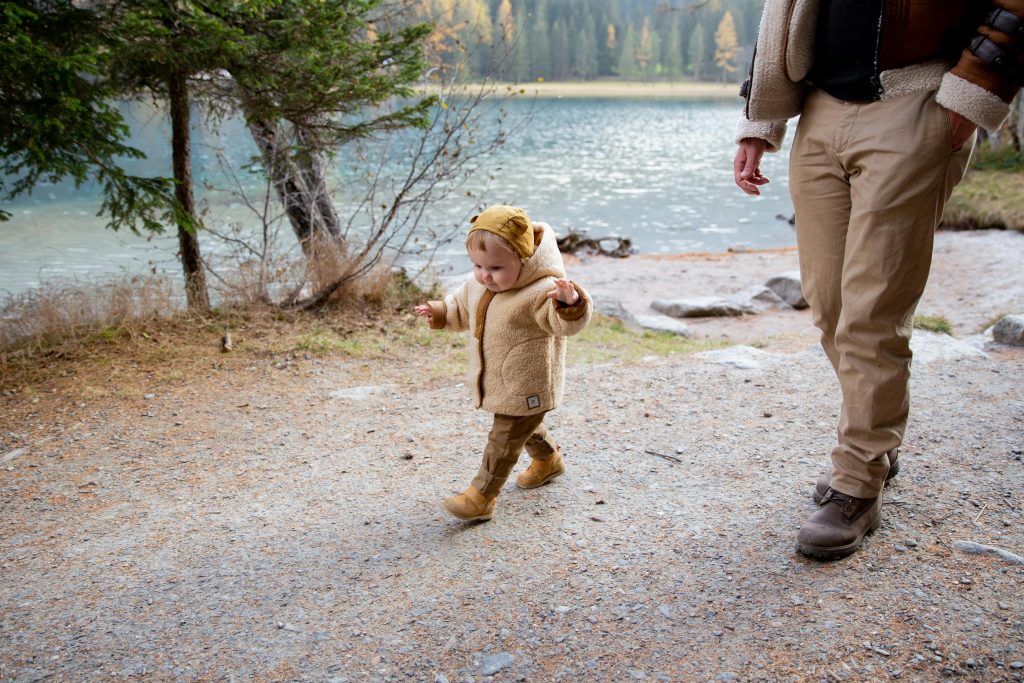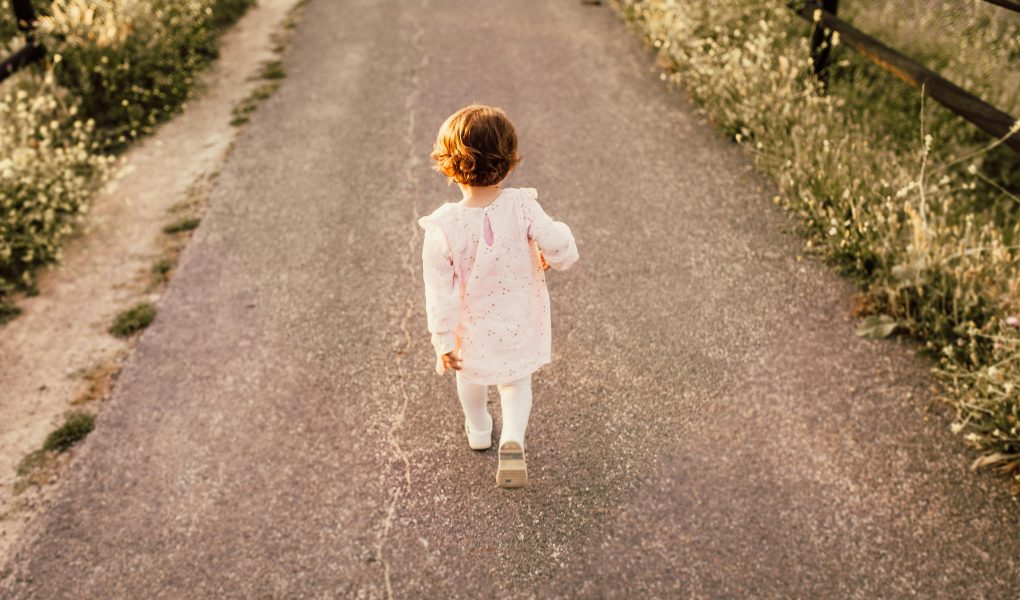In today’s fast-paced, digitalized world, the way we interact with our children is changing rapidly. Smartphones, tablets, and other gadgets have become an integral part of our daily lives, often serving as the primary means of entertainment and education for young children. While technology offers many benefits, it also means that natural, physical interactions between parents and their children are becoming less common. As a result, traditional practices that once played a crucial role in a child’s physical development, such as encouraging a baby to walk, are starting to fade into the background.
Walking is one of the most significant milestones in a child’s early life. It marks the transition from infancy to toddlerhood and opens up a world of exploration and independence. However, as parents become more reliant on digital devices to occupy their children, the practice of actively engaging in their physical development can sometimes take a backseat. The art of teaching a baby to walk, once a hands-on, interactive process, is now at risk of being overshadowed by the convenience of modern technology.
This article aims to bridge the gap between the digital and the physical, offering parents practical tips and strategies to encourage their baby to walk. By balancing the benefits of modern life with the timeless value of hands-on parenting, we can help our children achieve this important milestone with confidence and joy.
Understanding Your Baby’s Developmental Readiness
Walking is a major milestone in a baby’s development, but it’s important to remember that every child is unique and will reach this stage in their own time. Understanding your baby’s developmental readiness for walking is the first step in providing the right support and encouragement.
Timeline of Physical Development
Most babies start to show signs of readiness to walk between 9 and 18 months. The journey typically begins with earlier milestones like rolling over, sitting up, and crawling. These movements help build the muscle strength and coordination necessary for standing and walking.
By the time a baby begins pulling themselves up to stand, usually around 8 to 10 months, they are starting to develop the leg strength and balance needed for walking. Cruising, or walking while holding onto furniture for support, often follows, marking a key stage in the transition from crawling to independent walking.
Signs of Readiness
Certain behaviors indicate that your baby might be ready to take their first steps. Pulling up to stand is one of the most obvious signs, but others include cruising along furniture, standing without support for brief periods, and showing curiosity about moving independently. Some babies might also start to squat down and stand up repeatedly, practicing the movement required for walking.
It’s essential to observe these cues and provide your baby with opportunities to practice their new skills in a safe environment. However, it’s equally important not to rush the process. Pushing a baby to walk before they are ready can lead to frustration and may even delay their progress.
Developmental Variations
While some babies might start walking as early as 9 months, others may not take their first steps until closer to 18 months. Both scenarios are perfectly normal. Developmental variations are influenced by many factors, including genetics, personality, and environmental opportunities.
For instance, a baby who enjoys crawling might take longer to walk because they are content with their current mode of movement. On the other hand, a more adventurous baby might be eager to walk sooner. As a parent, it’s crucial to be patient and supportive, recognizing that each baby develops at their own pace.
Role of Genetics and Environment
Both genetics and environment play significant roles in a baby’s readiness to walk. A family history of early or late walking can influence when a baby begins to walk. Similarly, the environment in which a baby is raised can either encourage or hinder their physical development.
Providing a safe space where your baby can explore and practice standing and walking is key. Babies who have ample opportunities to move around, whether indoors or outdoors, tend to develop the necessary motor skills more quickly. Conversely, spending too much time in restrictive devices like walkers or bouncers can delay walking by limiting the baby’s ability to move freely and build strength.

Creating a Safe and Stimulating Environment
A safe and stimulating environment is crucial for encouraging your baby to walk. As your child begins to explore the world on their feet, creating a space that is both secure and conducive to movement will help them build confidence and practice their new skills without unnecessary risks.
Childproofing the Home
The first step in preparing your home for a walking baby is thorough childproofing. Babies are naturally curious and eager to explore, which means they might encounter hazards if their environment isn’t properly secured. Start by ensuring that all heavy furniture is anchored to the walls to prevent tipping. Sharp edges on tables and other furniture should be covered with protective padding, and small objects that could pose a choking hazard should be kept out of reach.
Electrical outlets should be covered with safety plugs, and any cords or wires should be securely hidden away. It’s also important to install safety gates at the top and bottom of stairs to prevent falls. Additionally, keep cleaning supplies, medications, and other hazardous materials locked away in cabinets that are out of your baby’s reach.
Encouraging Exploration
Encouraging your baby to explore different surfaces and environments is essential for developing their balance and coordination. Babies learn a lot by touching, feeling, and moving on various textures. If possible, allow your baby to walk on carpeted areas, hardwood floors, grass, and even sand. Each surface offers a different challenge and helps improve your baby’s adaptability and muscle strength.
Creating a clear, open space where your baby can move around freely is also important. Avoid cluttering the area with too many toys or obstacles, as this can be overwhelming and may discourage your baby from walking. Instead, opt for a few strategically placed items that encourage movement, such as a low coffee table for cruising or a sturdy chair they can pull themselves up on.
Choosing the Right Footwear
Footwear plays a significant role in your baby’s ability to walk comfortably and safely. For babies just learning to walk, barefoot is often best as it allows them to feel the ground and develop natural balance and coordination. However, when shoes are necessary—such as when walking outdoors—choose lightweight, flexible shoes that offer protection without restricting movement.
Creating Walking-Friendly Spaces
To further encourage walking, arrange your home in a way that promotes movement. Place furniture close enough together so your baby can move from one piece to another while cruising, but not so close that it limits their movement. A walking-friendly space might also include a designated area with push toys or a clear path where your baby can practice walking without obstacles.

Techniques to Encourage Independent Walking
Encouraging your baby to walk independently involves more than just setting up the right environment—it requires hands-on techniques that help build their strength, confidence, and motivation. Here are some strategies that can support your baby’s journey from crawling to walking.
Tummy Time and Core Strength
Tummy time is one of the most effective ways to build the core strength that is crucial for walking. When a baby spends time on their tummy, they develop the muscles in their neck, shoulders, arms, and core. These muscles are essential for all kinds of movement, including sitting up, crawling, and eventually walking.
To maximize the benefits of tummy time, start incorporating it into your baby’s daily routine from an early age. You can make tummy time more enjoyable by placing toys within your baby’s reach or lying down on the floor to interact with them. As your baby gets older, you can increase the duration of tummy time and introduce more challenging activities, such as reaching for objects or playing with push-pull toys.
Using Toys and Props
Toys and props can be powerful motivators for encouraging your baby to walk. Push toys, in particular, are excellent tools for promoting walking. These toys provide support and stability as your baby practices taking steps. Look for push toys that are sturdy and have adjustable resistance, so they don’t move too quickly and cause your baby to lose balance.
Another effective technique is to use toys that light up or make sounds when moved. These types of toys can spark your baby’s curiosity and encourage them to move towards the toy, taking steps in the process. You can also try placing toys just out of your baby’s reach, so they have to stand up and walk to get them.
Modeling and Imitation
Babies learn a lot by watching and imitating others, so modeling walking behavior is a great way to encourage your baby. When your baby sees you walking, they may become curious and want to try it themselves. You can turn this into a game by walking around the room and encouraging your baby to follow you. This not only helps them practice walking but also makes it a fun and interactive experience.
You can also encourage your baby to imitate other children who are walking. If you have friends or family members with slightly older children, arrange playdates where your baby can observe and interact with these children. Seeing their peers walking might inspire your baby to take those first steps.
Positive Reinforcement
Positive reinforcement is key to encouraging your baby to walk. Babies thrive on praise and encouragement, so be sure to celebrate every small achievement. Whether it’s a single step or a successful attempt at standing, offering lots of praise and affection will boost your baby’s confidence and motivate them to keep trying.
Clapping, cheering, and giving your baby a big hug after they make progress are all effective ways to reinforce their efforts. It’s also important to remain patient and avoid showing frustration if your baby isn’t walking as quickly as you’d like. Every baby develops at their own pace, and your support will help them get there in their own time.
Creating Routine Practice Times
Like any new skill, walking requires practice. Set aside specific times each day for walking practice. This could be after meals when your baby is well-fed and happy, or during playtime when they are naturally active and curious. Consistency is important, so try to incorporate walking practice into your baby’s daily routine.
During these practice sessions, use the techniques mentioned above—like tummy time, push toys, and positive reinforcement—to encourage your baby to take steps. Keep the sessions short and fun to avoid frustration or fatigue, gradually increasing the length of practice as your baby becomes more confident.
Supporting Your Baby Through Challenges
Learning to walk is an exciting journey, but it comes with its share of challenges. As your baby navigates this new skill, they might experience frustration, fear, or setbacks. Supporting your baby through these challenges is crucial for building their resilience and confidence.
Dealing with Frustration and Setbacks
It’s common for babies to experience frustration as they learn to walk. They might struggle with balance, stumble frequently, or get upset when they can’t achieve what they’re trying to do. As a parent, it’s important to acknowledge your baby’s feelings and offer comfort and encouragement.
When your baby becomes frustrated, try to stay calm and positive. Avoid pushing them too hard to keep practicing if they seem overwhelmed. Instead, take a break and shift to a different activity that your baby enjoys. Once they’ve had time to relax, you can gently encourage them to try again.
Balancing Assistance and Independence
Finding the right balance between offering support and encouraging independence is key to helping your baby learn to walk. While it’s natural to want to help your baby as much as possible, it’s also important to allow them to try things on their own.
Holding your baby’s hands as they walk can provide them with the stability they need while they gain confidence. However, as your baby becomes more comfortable with standing and cruising, gradually reduce the amount of assistance you provide. Encourage your baby to take steps on their own, even if it means letting go of your hands for short periods.
Understanding Fear and Anxiety
Learning to walk can be a daunting experience for some babies, especially if they’ve experienced a fall or stumble. It’s not uncommon for babies to develop fear or anxiety around walking, which can slow down their progress.
If your baby seems hesitant or scared to walk, try to identify the source of their anxiety. It might be related to a recent fall, a new environment, or the fear of letting go of your support. Reassure your baby by staying close and offering gentle encouragement. You can also use comforting routines, like singing a favorite song or playing a familiar game, to help your baby feel more at ease.
It’s important to give your baby the time they need to overcome their fears. Pushing too hard can increase anxiety and make the process more stressful. Instead, create a supportive and calm environment where your baby feels safe to explore and try new things at their own pace.

The Role of Play in Learning to Walk
Play is an essential part of a child’s development, and it plays a particularly important role in learning to walk. Through play, babies can practice their motor skills, explore movement, and build the confidence they need to take their first steps.
Incorporating Play into Walking Practice
One of the best ways to encourage walking is to incorporate it into your baby’s playtime. This makes the process enjoyable and keeps your baby motivated. You can do this by turning walking practice into a game, such as setting up a mini obstacle course with pillows or soft toys that your baby can navigate.
You can also use interactive play to encourage movement. For example, play a game of “catch me if you can” by crawling a short distance away from your baby and encouraging them to follow you. As your baby becomes more confident, you can gradually transition from crawling to walking.
Making walking a part of playtime helps your baby see it as a fun and natural activity, rather than a task they have to accomplish. This positive association can significantly boost their enthusiasm and willingness to practice.
Games That Encourage Movement
There are several simple games that can encourage your baby to walk. One such game is “follow the leader,” where you lead your baby around the room, showing them how to walk from one place to another. You can make this more exciting by incorporating clapping, singing, or even dancing as you move.
Another effective game is “musical statues.” Play your baby’s favorite music and encourage them to dance and move around. When the music stops, everyone has to “freeze” like a statue. This game helps your baby practice stopping and starting, which is an important part of walking.
You can also create a mini obstacle course using cushions, boxes, or soft toys. Encourage your baby to walk or cruise around these obstacles, which will help them develop better coordination and balance.
Interactive Toys
Interactive toys are great tools for encouraging walking. Push toys that make sounds or light up as they move can be particularly motivating for babies. These toys provide both entertainment and the stability your baby needs as they practice walking.
Other interactive toys, like activity tables, can also promote standing and walking. Place these toys at a height where your baby has to pull themselves up to play. As they become more comfortable standing, they may begin to take steps around the toy or from one toy to another.
Balls are another simple yet effective interactive toy. Rolling a ball and encouraging your baby to chase it can motivate them to move and practice walking. The unpredictable movement of the ball adds an element of surprise and fun, making the walking practice feel more like play.
Outdoor Play
Outdoor play offers a change of scenery and new challenges that can help your baby develop walking skills. Walking on grass, sand, or uneven surfaces provides different sensory experiences and helps improve your baby’s balance and coordination.
Take your baby to a park or playground where they can explore different textures and surfaces. Walking on grass, for example, requires a different kind of balance than walking on a smooth floor. The softness of the grass provides a safe environment for falls, while the uneven surface helps strengthen the muscles and improves coordination.
When to Seek Professional Help
While most babies will learn to walk on their own timeline, there are instances when delays in walking may indicate an underlying issue that requires professional attention. It’s important to know when to seek help if your baby isn’t meeting typical walking milestones or if you notice any signs of developmental concerns.
Recognizing Signs of Delay
While every baby develops at their own pace, there are general milestones that can help you gauge whether your baby’s development is on track. Most babies begin walking independently between 9 and 18 months. If your baby hasn’t started showing signs of readiness to walk by 18 months, such as pulling up to stand or cruising along furniture, it may be worth discussing with your pediatrician.
Other signs that may warrant a closer look include:
– Stiffness or Floppiness: If your baby’s muscles seem unusually stiff or floppy, it could indicate an issue with muscle tone or strength that may affect their ability to walk.
– Uncoordinated Movements: Difficulty coordinating movements or significant imbalance when standing or walking could be a sign of a neurological or developmental issue.
– Lack of Interest in Walking: If your baby shows little to no interest in standing, cruising, or walking by 18 months, this may indicate a developmental delay.
Conclusion
Encouraging your baby to walk is a journey filled with excitement, challenges, and countless small victories. In a world increasingly dominated by technology, it’s more important than ever to create meaningful, hands-on experiences that support your child’s physical development. Walking is not just about reaching a milestone; it’s about building the confidence, independence, and curiosity that will serve as the foundation for your child’s future growth.
Throughout this process, remember that every baby is unique. They will reach their milestones in their own time and in their own way. As parents, our role is to provide a safe, supportive environment where our children can explore, practice, and develop at their own pace. By combining a strong understanding of your baby’s developmental readiness, creating a stimulating environment, using effective techniques, and offering unwavering support, you can guide your child through this important stage with love and patience. The steps they take today are laying the groundwork for a lifetime of exploration and discovery.



